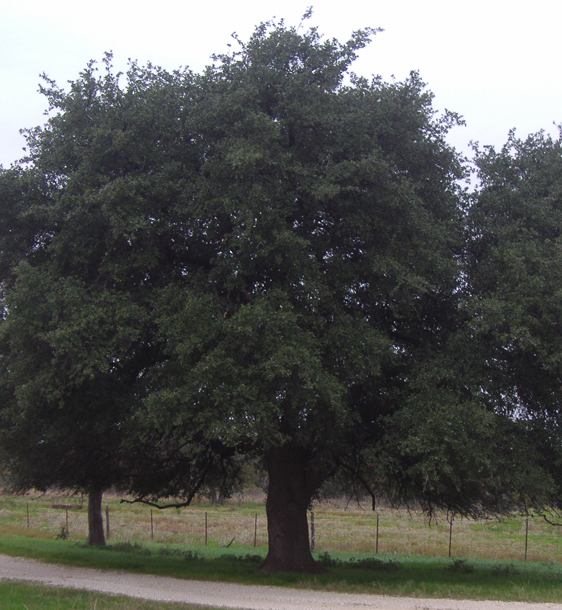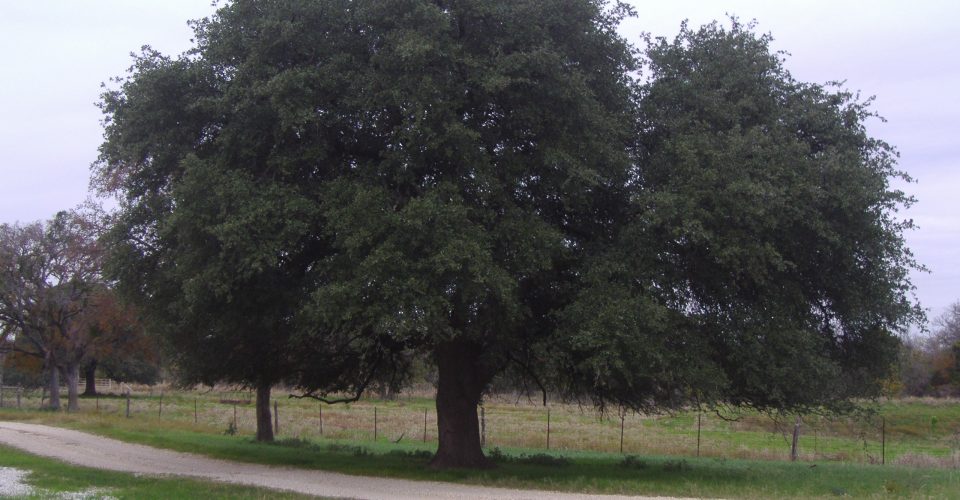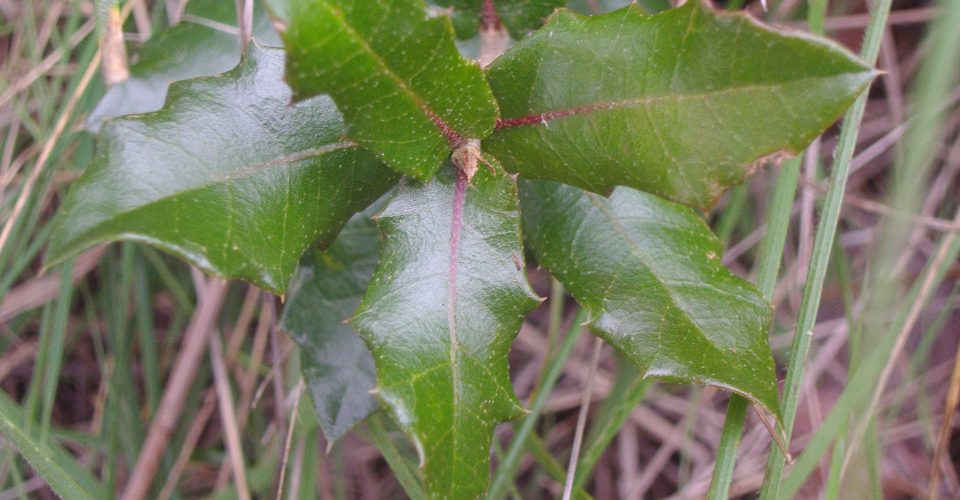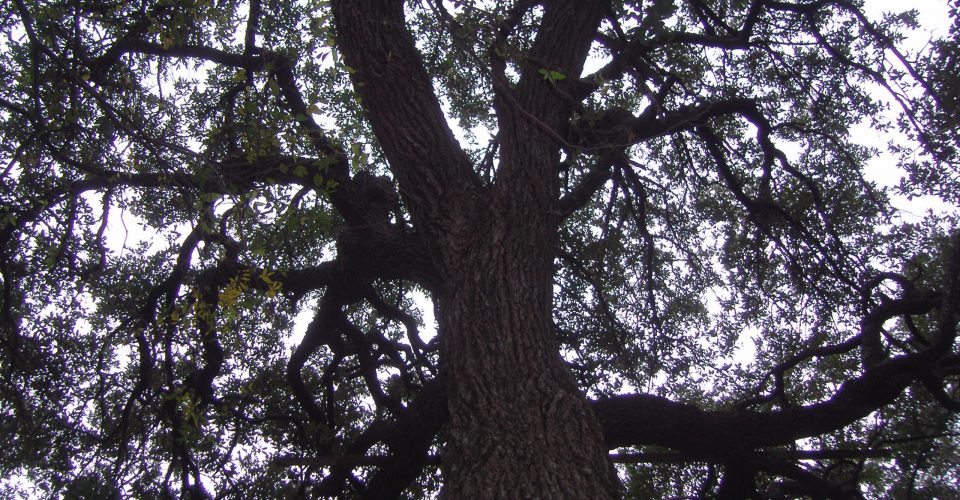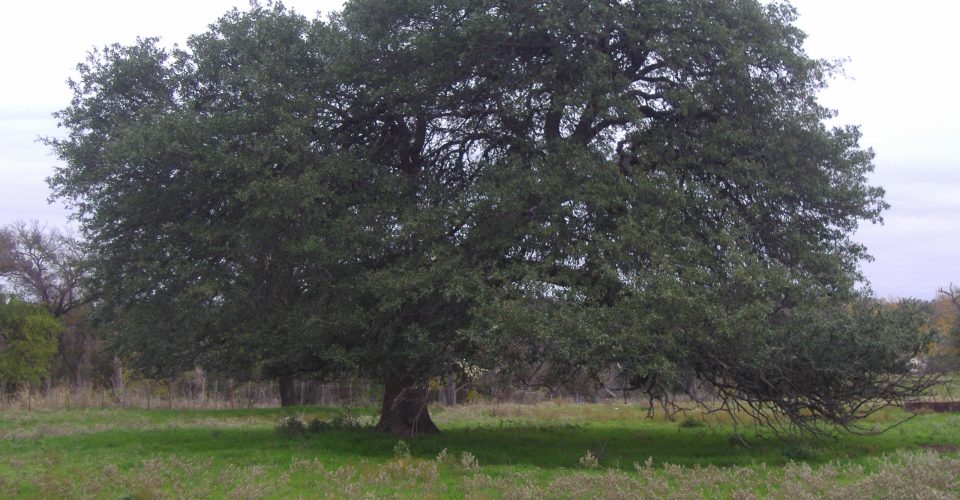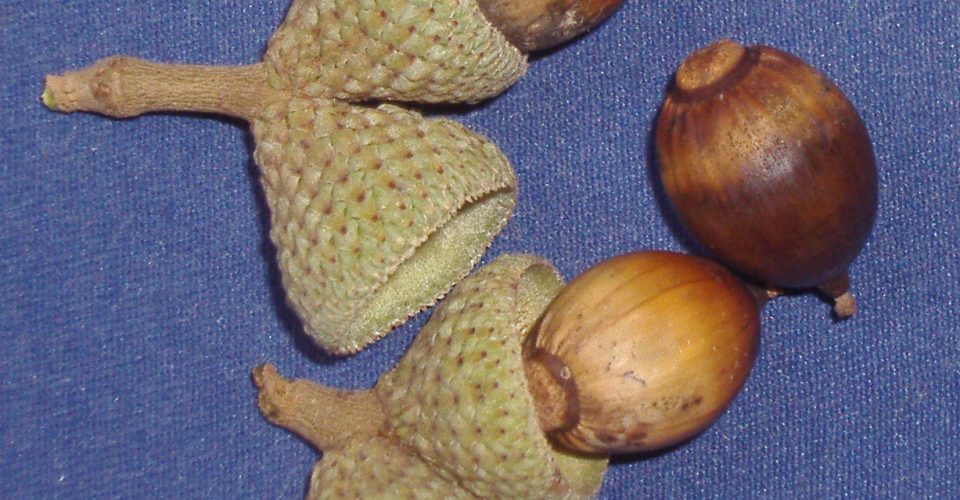Live oak (Quercus virginiana)
Live oak is a native, warm season woody plant that grows on many soils and is found in most areas of the South. Live oak is a member of the Beech family. There are several species that are found in Texas, Oklahoma and the South that are very similar in function.
Live oak furnished the dense lumber for the outer hull of the USS Constitution “Old Ironsides,” a fine shady area for Sam Houston’s army to camp during the fight for Texas independence and areas to draft a treaty with various enemies of our founding fathers.
They line the road to many a country estate, provide a place of romance at Texas A&M University, aka the “kissing oak,” and offer numerous places to hold court.
- Live oak provides browse for domestic stock as well as many wildlife species.
- It sheds its leaves as it puts on new growth in the spring. While it seems to be an evergreen, it is really a deciduous tree.
- Trees drop mast or acorns in the fall that provide food for whitetail deer, turkey and many other animals. The young leaves are relished by domestic livestock and wildlife and provide much-needed nutrition when conditions are harsh.
- Live oak “motts” provide much-needed thermal cover for wild and domestic animals during periods of inclement weather.
- Live oak trees lend tremendous economic value to rural and urban landscape in the form of aesthetics.
- They can be a serious problem in areas of the state by becoming too thick and choking out all other desirable vegetation. This can be remedied by herbicides and prescribed fire.
- Live oak can be very susceptible to disease and has been wiped out on thousands of acres of valuable rangelands and urban landscapes.
Editor’s note: Jeff Goodwin and Kent Ferguson, USDA Natural Resources Conservation Service (NRCS), are providing us with plant identification photo stories to help ranchers identify those forbs, forages and brush species growing in the pastures. Photos provided by the authors.
Live oak is excerpted from the January 2014 issue of The Cattleman magazine.

